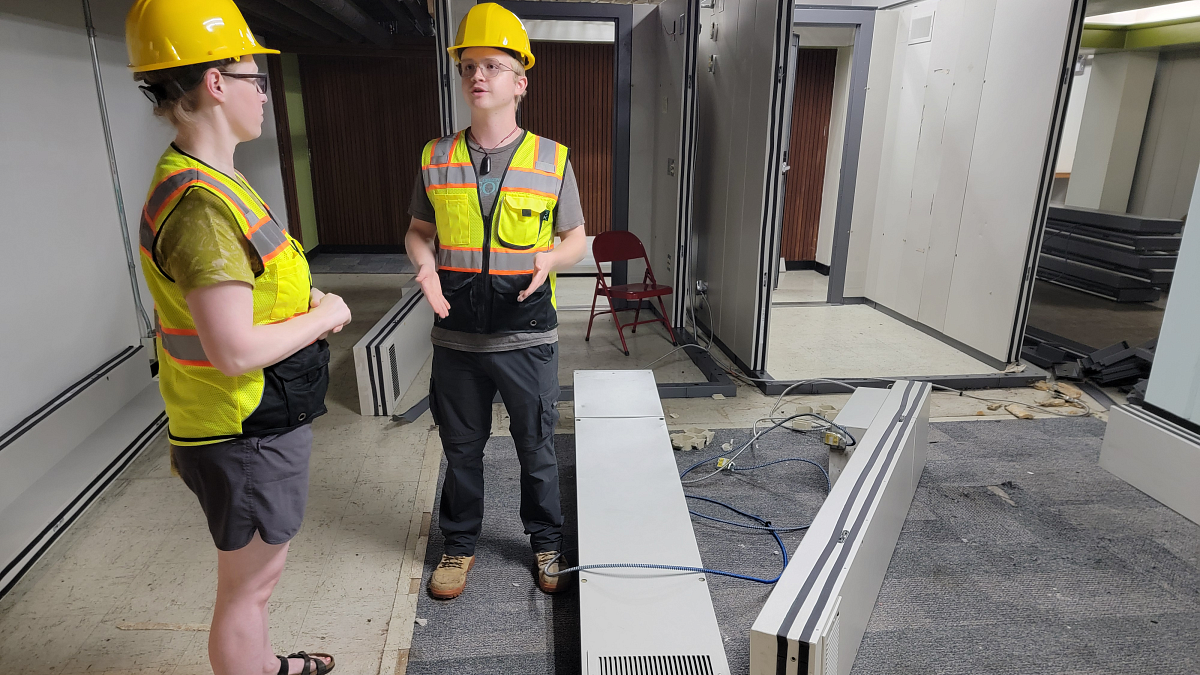It looks like the only thing that will be left inside Hamilton Hall when it comes down will be memories.
With the residence hall’s planned removal later this summer, Housing Capital Construction is finishing an exhaustive reuse-and-recycle effort of all assets. Working with partners inside and outside the university, officials have endeavored to keep building equipment and materials out of the landfill before the hall becomes green space.
“It’s recycling or reusing anything that we can, and that’s everything from chairs and tables all the way to sheet metal,” said Andrew Schumacher, a coordinator of the effort with Housing Capital Construction. “I want to avoid the landfill at all costs.”
In accordance with University of Oregon policy, officials first offered reusable assets to other Housing units and university departments by listing equipment with the UO’s Surplus Equipment Exchange. Housing also connected with local nonprofit organizations including BRING Recycling and St. Vincent de Paul, and is using the online auction site, GovDeals. The unit also worked with the Office of Sustainability to direct assets to the UO Surplus Store in Springfield.
Through these efforts, Housing tallied these reuse/recycle successes:
- More than 60,000 pounds of wood, steel, furniture and other material salvaged by BRING.
- Roughly 800 office chairs being auctioned off to new users.
- Almost all lounge furniture has been donated to various nonprofits, including more than 30 sofas and 20 lounge chairs.
- All 800-plus mattresses were either saved for reuse by Housing or donated to local nonprofits.
- All frames for the mattresses were donated to local foundations for affordable housing units and shelters.
- Compostable paper goods from dining operations were given to the UO’s Moss Street Children’s Center and Vivian Olum Child Development Center for reuse.
Housing is also celebrating some particular victories. Seven acoustic rooms in the hall — composed of sound-absorbing equipment — were claimed by the School of Music and Dance and University Health Services.
“They’re a modular system, like Legos, and we didn’t want to get rid of them because there’s still so much use they can have,” Schumacher said. “We said, ‘Why don’t we reach out to people who might be interested in them?’”
Schumacher, who graduated in June, said helping to coordinate the Hamilton reuse/recycle effort has given him valuable training as he considers a career in project management.
“The biggest thing is just staying organized. I’ve got meetings and meetings and meetings,” he said. “Coordinating everything has been a big learning experience. I’m learning what to do — and what not to do.”
—Matt Cooper, University Communications


